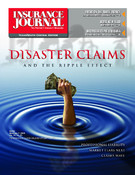Nearly 90% of U.S. corporations juggle multiple lawsuits.
Litigation has become the great equalizer of the modern corporation.
Regardless of size, industry or location, there is certain to be a sizeable number of disputes diverting the resources of American businesses. Nearly 90 percent of U.S. corporations are engaged in some type of litigation, and the average company balances a docket of 37 U.S. lawsuits. For $1 billion-plus companies in the U.S., the average number of cases being juggled at home soars to 147.
Those are findings from the latest annual 2005 Litigation Trends Survey from the Texas-based international law firm Fulbright & Jaworski LLP, in one of the largest samplings of in-house counsel in the U. S. The median-sized U.S. company surveyed reported annual gross revenues of $484 million; companies from 45 states were represented.
Accepting the reality that litigation is a constant in their business lives, close to 90 percent of U.S. corporate counsel have no plans to reduce the number of outside lawyers that handle their cases. The ubiquity of litigation in American business goes a long way toward explaining the overriding concern of corporate counsel with controlling litigation expenses. Indeed, respondents expressed more concern about what they perceived as the high costs of litigation than they did about winning or losing the underlying lawsuits.
Ironically, despite the certainty that litigation expenses will continually accrue, the inherent unpredictability of their pace or size makes budgeting for litigation a difficult task for many corporate counsel. Just under 40 percent of U.S. corporate counsel are still unable to predetermine the costs of managing business disputes, reporting that they could not quantify their litigation budgets in relation to their overall legal budgets.
To be sure, a great many companies are acutely aware of the extent of their overall legal spending. Of the companies that did track spending (half of the respondents), their average legal budget was $20.1 million, of which $8 million was spent on litigation. However, 10 percent reported that their legal spending accounts for 5 percent or more of their company’s overall gross revenues, which for a $1 billion business, translates into $50 million.
The concern about costs manifests itself across the survey, whether respondents were ranking their five leading litigation concerns or describing their ideal outside counsel. When asked what message they would most like to deliver to their outside lawyers, the number one directive was “control costs.” That message took precedence over “win cases,” “get results” or an array of other results-driven choices.
“A key value of such a broad survey of in-house counsel is that it gives the legal community an opportunity to step back from the trenches and tap into the mindset of corporate America, for whom litigation can play a key role in an overall business strategy,” said Stephen C. Dillard, head of Fulbright’s worldwide litigation practice. “The findings remind us that for our clients, litigation can be a challenging and costly part of doing business. Litigation is also a risk-reward decision in which costs can be as important as outcomes. Given the emphasis that survey respondents placed on expenses, professional litigators need to work harder with their clients to anticipate, budget and control costs.”
Some of the findings seem to be ripped from recent headlines, including dramatically increased concerns about the burdens stemming from electronic discovery in light of high-profile events, such as the Frank Quattrone trial and the Arthur Andersen Supreme Court decision. Electronic discovery was the number one new litigation-related burden for companies with revenues over $100 million.
U.S. companies surveyed are mindful of the consequences of faulty record keeping: over 80 percent now have records retention policies and three-quarters have litigation hold policies.
“The advent of electronic discovery, coupled with more stringent record keeping requirements, has exponentially added to the burdens imposed by litigation,” said Robert D. Owen, a Fulbright litigation partner and leader of the firm’s records management and e-discovery practice group. “In light of the enormous risks involved with poor records retention, it comes as no surprise that electronic discovery is identified as the number one new concern of this year’s respondents. I don’t believe it a coincidence that in-house counsel raised these concerns while simultaneously voicing their distress over rising litigation costs–in my view, the two are inseparably linked.”
For companies with gross revenues under $100 million, there was a different new worry, also straight from the front page–regulation and compliance. As many of the comments showed, the Sarbanes-Oxley Act, and its tougher requirements for securities filings, has had a large effect on smaller companies.
As for the kinds of claims U.S. companies face most, the answer is surprising. Despite the buzz about class actions, tort reform and corporate fraud, the top litigation concerns are much more staid: contracts and labor/employment claims. Largely ignoring size or industry differences, these two areas each account for roughly one-quarter to one-half of the litigation dockets of American corporations.
Was this article valuable?
Here are more articles you may enjoy.


 Allstate Can Proceed With Recovery in Texas RICO Case: Fifth Circuit
Allstate Can Proceed With Recovery in Texas RICO Case: Fifth Circuit  Update: Verizon Says Service Restored After Thousands Affected by Outage
Update: Verizon Says Service Restored After Thousands Affected by Outage  Grandson Not Covered Under Grandma’s Home Insurance
Grandson Not Covered Under Grandma’s Home Insurance  Florida OIR Triples the Size of Citizens’ Rate Decrease
Florida OIR Triples the Size of Citizens’ Rate Decrease 


